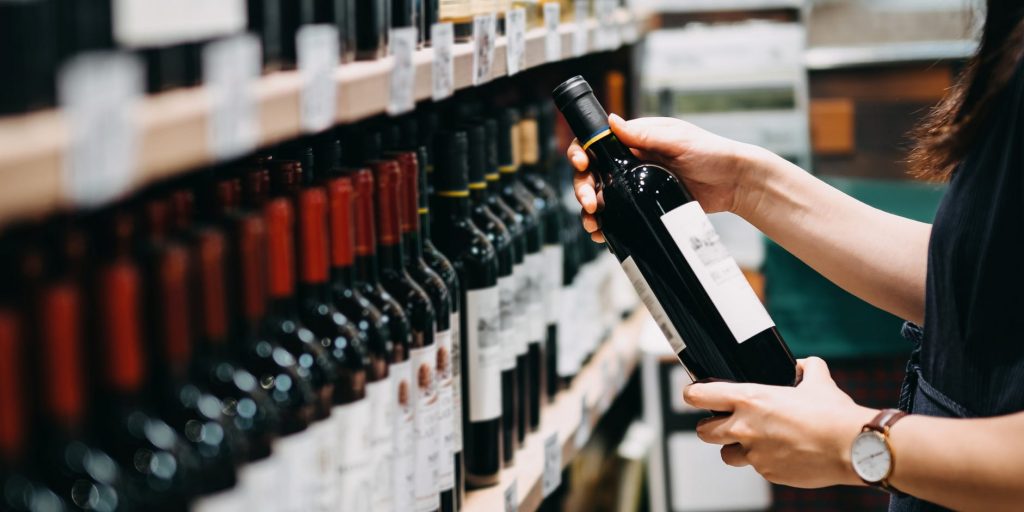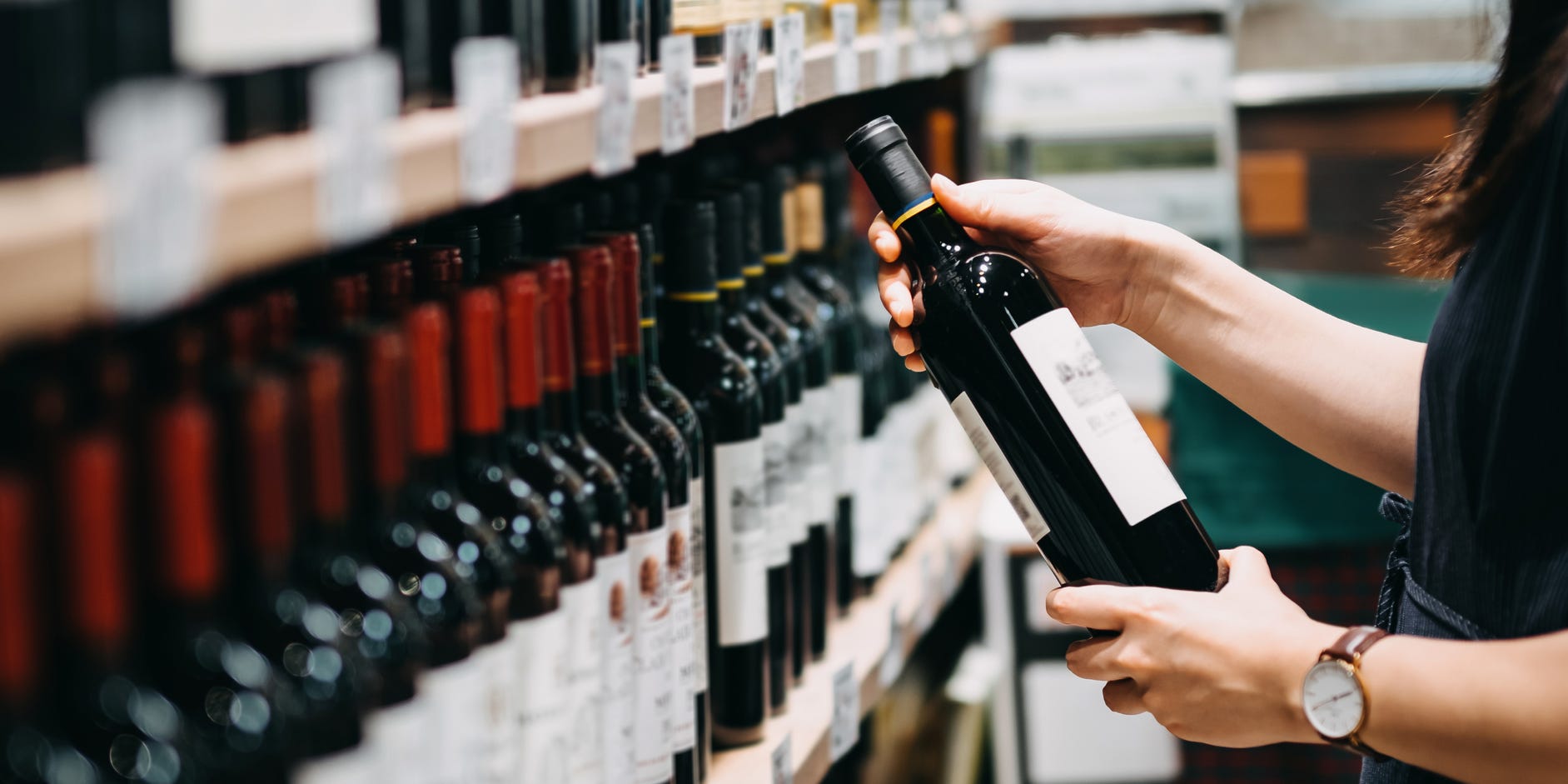
d3sign/Getty Images
- The main types of wine include red, white, rosé, sparking, and fortified and dessert wines.
- Exploring new wines can help expand your palette and knowledge of drinks to pair with different dishes.
- Grapes from all over the world give wines a range of flavors from fruity to oaky to dry.
- Visit Insider's Home & Kitchen Reference library for more stories.
Humans have produced and enjoyed wine for over 8000 years, so it stands to reason that this grape-based beverage would be easy and stress-free to enjoy, right?
Unfortunately, that's not always the case. Wine education covers a great deal of information, from grape types to geographic regions to flavor profiles. While some drinkers love to geek out to the nuances and details of this subject, others can feel a bit overwhelmed when they walk into a wine shop.
While there's no limit to the amount of information that you can learn, a few basic guidelines will help direct your shopping experience and allow you to get your hands on a bottle that suits your tastes and preferences.
As vast as the world of wine is, most wines can be classified into five main categories: red, white, rosé, sparking, and fortified and dessert wines. Below, you'll find a rundown of these categories, with a breakdown of 28 popular variety types.
To offer some expert insight, we've enlisted sommelier and wine educator Caroline Conner of @winedinecaroline, who teaches online courses to wine lovers seeking to enhance their knowledge and broaden their wine-related horizons.
Why is it important to know about different types of wine?
"The best way to learn about wine is to approach it like learning a language," says Conner. "You can DIY it, but without lots of real life practice, it's hard to get anywhere." Knowing what you're tasting and why can help you along your wine journey in a number of ways:
- Developing your palate: You may have heard the term "palate" tossed around by wine drinkers in the past, but it really just refers to a sense of taste, which can be developed by simply tasting. The more flavors you experience, the more sophisticated your palate will become, because you'll understand how taste elements differ from each other and how they work together to create unforgettable flavors.
- Discovering food and wine pairings: Wine and food are a natural match for each other, and when you figure out which wines taste best with which dishes (according to your own palate), then you can take your meals to the next level.
- Gaining a global perspective on wine. As corny as it sounds, you really can "travel the world" by tasting wines from different countries, continents, and regions. Learning about the climate and soil conditions of a particular country can help you understand how the wines from that nation develop their flavors. Paying attention to common wine and food pairings from that country will clue you in on how best to enjoy the bottles you purchase.
How to talk about wine
Because flavors are so subjective, it's easy to dismiss wine-tasting terms as pretentious and less-than-useful. However, understanding a few basic phrases can give you all the vocabulary you need to describe the wines you enjoy (and the ones that you don't). To get you started, here are a few commonly-used wine words:
- Dry: "Dry" essentially translates to "not sweet". Dry wines don't contain residual sugar from the fermentation process (or, if they do, it's in a very low quantity).
- Off-dry: An off-dry wine features a small amount of residual sugar, which gives it a gentle sweetness. The French term for off-dry, "demi-sec," is also frequently used in wine tastings and on bottle labels.
- Sweet: A sweet wine - also known as a dessert wine - contains significant amounts of residual sugar and has a pronounced sweetness in its flavor.
- Oaky: Many red wines and certain white wines undergo a process of aging in oak barrels, and said barrels impart a woodsy, toasty flavor to the wine. The more time the wine spends in the oak barrels, the stronger the "oaky" flavor will become.
- Full-bodied: This is a term generally used to describe red wines, and it refers to both the flavor of the wine and to its texture. A full-bodied wine boasts rich, complex flavors, a robust texture that coats your mouth and tongue, and (in most cases) a higher alcohol content than a light-bodied or medium-bodied wine.
- Tannins/Tannic: Tannins are natural compounds found in wine grapes (particularly in the skins of said grapes). These compounds affect the texture of the wine in the mouth; the drying sensation that you may experience when drinking a glass of red wine comes from tannins. Tannins exist in both white and red wines, but because red wines are produced and aged with the grape skins still in-contact, the tannic structure of red wines tends to be more prominent.
- Grape: The vast majority of wine produced worldwide use grapes as their core ingredient. Wine grapes differ from "table grapes" designed for eating; they're typically smaller, juicier, and more acidic. Most wine grapes are of the vitis vinifera species, a style of grape specifically cultivated for wine production.
Some wines are named after the style of grape used to make them; "Chardonnay", "Cabernet Sauvignon", and "Pinot Noir" are all examples of grapes that often lend their names to their wines. However, some wines take their names from the regions where they're produced. French wines are especially notable for this pattern: "Champagne", "Bordeaux", and "Burgundy" all fit into the "wines named after regions" theme.
Now that you know how to talk about, let's get into the wines themselves. Below are many of the most popular wine styles you'll find in stores and at restaurants, along with a few underrated gems.
Red Wines
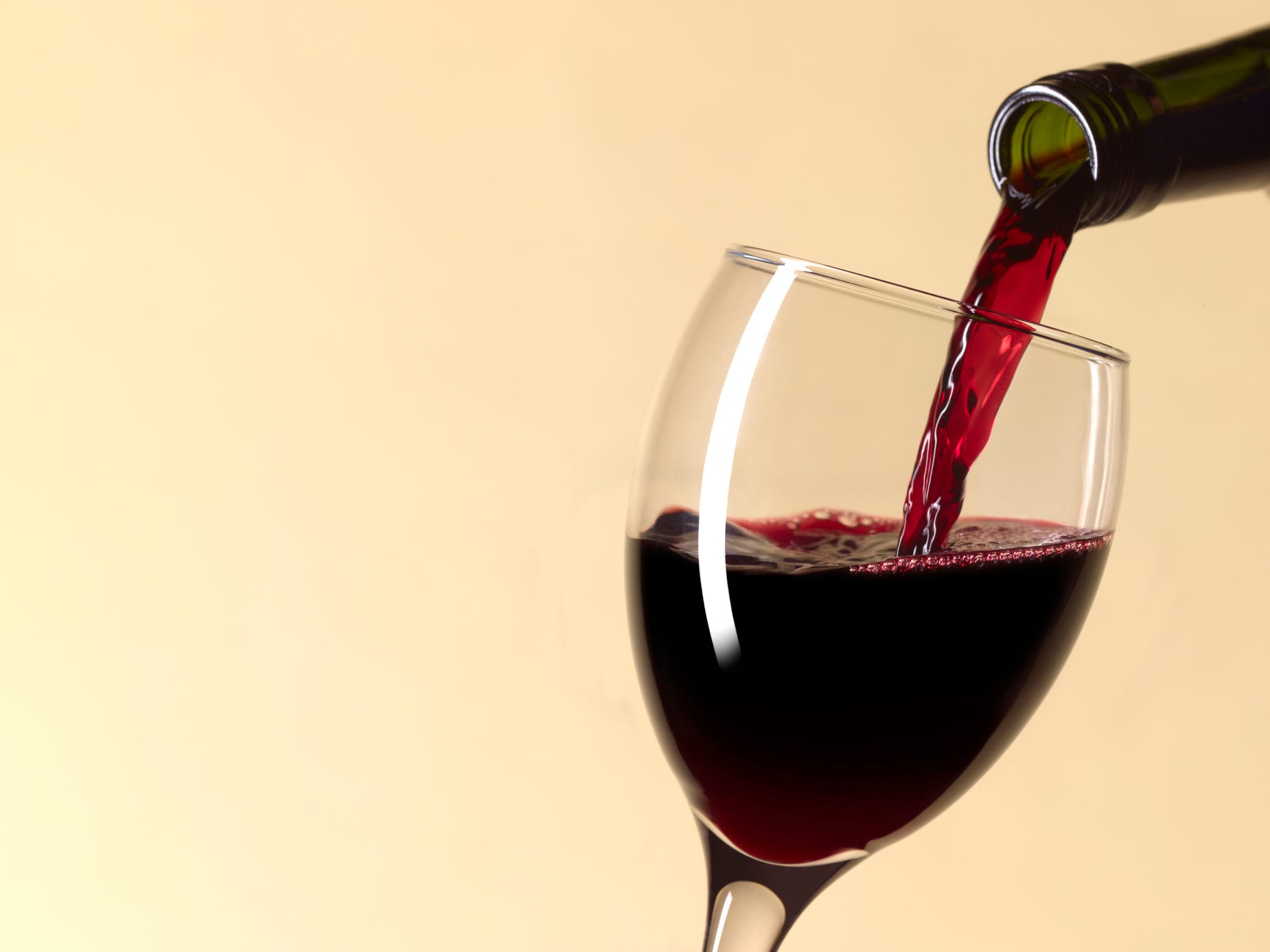
Peter Dazeley/Getty Images
Merlot
Merlot is a red grape that's grown throughout Europe, South America, Africa, Australia, and the United States. According to Conner, "some of the greatest wines in the world" are Merlots. "It's plummy and juicy, and a bit softer than Cabernet [Sauvignon], which it is often blended with," she says. It tastes delicious alongside charcuterie boards, roasted vegetables, and even cheeseburgers.
Cabernet Sauvignon
Like Merlot, Cabernet Sauvignon can grow in a wide variety of regions and is therefore an easy bottle to scoop up at any wine shop. As for flavor, Cabernet Sauvignon is full-bodied and dry. "Cabernet Sauvignon is 'bigger' than Merlot, and it has lots of tannins, which are those chewy, drying particles in reds," says Conner. "It's wildly popular and you can find stunning examples all over the world."
Pinot Noir
"Pinot Noir is widely loved because it's one of the rare lighter reds, but has tons of flavor and complexity," says Conner. "It's most famously from Burgundy, but there's great Pinot all over the place, like in Oregon, New Zealand, and even Germany." But she does warn that these wines can be fairly pricey: "Pinot is picky and fickle, it's prone to disease and only thrives in certain climates. You have to be a good winemaker to make the best of it, in any conditions! That's why it's so prized, because when it's good, it's good, and the winemaker took these grapes from the right place, treated them right, and made them sing."
Syrah/Shiraz
Wines made with this red grape can claim two names, depending on where the grapes are grown and where the wines are produced. In the Rhȏne Valley region of France, these wines are called Syrah, but in Australia, they're known as Shiraz. In both cases, you'll find a rich, deeply-hued red wine with strong dark-berry notes and high tannins.
Zinfandel
Like Syrah/Shiraz, the Zinfandel grape produces "big" red wines with lots of stage presence. Notes of dark fruit, tobacco, and leather are common when tasting Zinfandels. It's a popular grape in California vineyards (and most Zinfandel is indeed grown in the Golden State), but you can also find it in Italy, South Africa, and New Zealand.
Gamay
The Gamay grape is perhaps best known as the primary grape used to make Beaujolais. Made in France, Beaujolais wines are beloved for their light texture, high acidity, low tannins, and bright fruit flavors. Every November, the first release of Beaujolais bottles (known as "Beaujolais Nouveau") makes a huge splash in the wine market both in the U.S. and abroad.
Sangiovese
If you've ever enjoyed a glass of Chianti at an Italian restaurant, then you've experienced the Sangiovese grape. This purple-red grape produces many styles of wine made throughout Italy, all notable for their medium body, high tannins, red fruit flavors, and hints of spice. If you need a wine to pour at a red-sauce dinner, then Sangiovese will do you right.
White Wines

Mykhailo Lukashuk/Getty Images
Chardonnay
"Chardonnay is a true winemaker's grape; it can really do it all," says Conner. "A lot of people think they don't like it because all they've tried is their mom's oak-bomb, buttered-popcorn '90s Chardonnay. This style still exists, but it's not very trendy anymore, so it's easy to find Chards with less oak, more fruit, and more balance. Try Chablis from France if you want to taste a spectacular unoaked Chardonnay."
Sauvignon Blanc
This white grape famously makes lightweight wines with clean acidity and pronounced fruitiness. "Sauvignon Blanc is all about that fruit," says Conner. "It has two main styles: the super-intense version with passion fruit aromas coming out of New Zealand, and the more restrained, grassy French style from Sancerre. There are great Sauvignon Blancs from Chile and the USA too."
Riesling
White grapes are typically easier to grow in cooler climates than red grapes, and Riesling, which originally hails from Germany, serves as a prime example. Riesling wine is highly versatile; it can be sweet, dry, still, sparkling, and anything in between. Its fruity, floral flavors tend to pair well with white meat, fish, and anything spicy.
Pinot Grigio/Pinot Gris
Known as Pinot Grigio in Italy and Pinot Gris in France, this white grape makes a highly-approachable and popular wine with citrus notes, zingy acidity, and a pleasant undercurrent of minerality. Alongside a platter of fresh seafood or a cheese plate, Pinot Grigio/Pinot Gris truly shines.
Gewürztraminer
The Gewürztraminer grape is native to Germany, and wines made with it tend to feature fruit flavors like apricot and pear, along with herbaceous notes. In the US, Gewürztraminer proves especially popular at Thanksgiving, thanks to the fact that the wine's gentle fruit and herbal aromas pair perfectly with turkey, stuffing, and all of the fixings.
Chenin Blanc
Commonly grown in the Loire Valley of France and in South Africa, the Chenin Blanc grape translates to a white wine that's light-bodied, appealingly tart, and easy to pair with a variety of dishes. Try it with soft cow's milk cheeses like brie or with grilled or roasted veggies.
Albariño
If you're a fan of Sauvignon Blanc but want a white wine with even more fruit presence, then Albariño, a wine style native to Spain, could be perfect for you. Albariño is a medium-bodied white, which means it works very well as a food wine. Pair it with shellfish, white meat, or an entrée salad.
Rosés
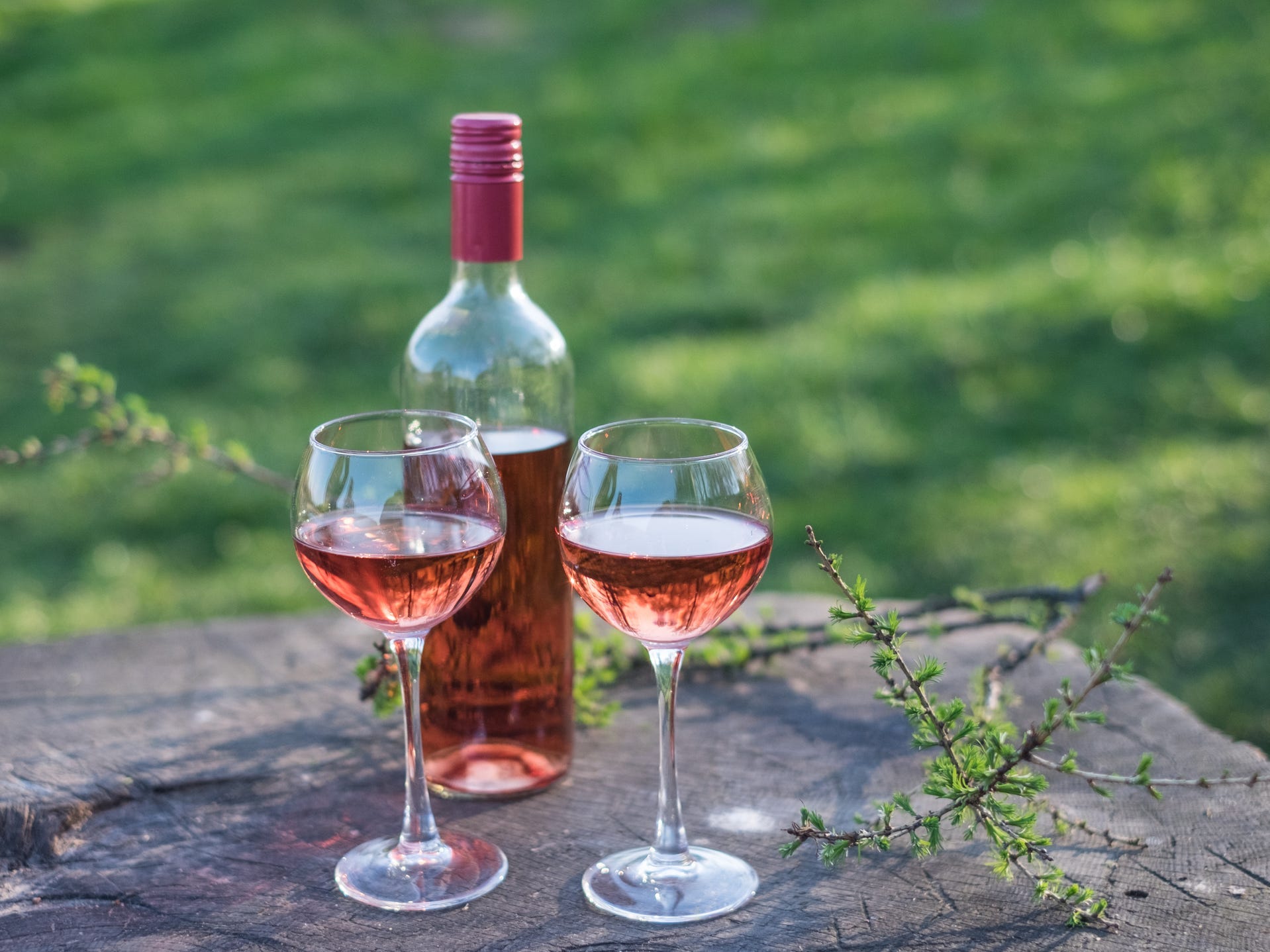
Dulin/Getty Images
Contrary to popular belief, most rosé wines aren't made by combining white grape juice with red grape juice. Instead, they're made by removing the skins from red grapes after a brief period of time, resulting in a wine that's light, refreshing, and a pretty shade of pink.
Provençal Rosé
Some rosés are made with only one type of red grape, but many - like the mega-popular, super-refreshing pale-pink rosés that come from Provençe, France - come from a blend of grapes. Conner urges us to embrace blended wines like Provençal rosés: "I think that blends are underrated," she says. "Many of the famous European wines are blends, and all the better for it! Blending is part of the art of winemaking, and especially with climate change disrupting vineyards, it will continue to be important in order to achieve balanced wines."
Zinfandel Rosé
Zinfandel rosés got a bad rap for many years due to the perception of "White Zinfandel" as overly sweet and not especially nuanced. However, you can now find plenty of quality Zinfandel rosés on the market, and many feature a delicate sweetness that makes them a great partner for BBQ dishes or grilled salmon.
Grenache Rosé
Grenache is one of the grapes most commonly used in the Provençal rosé blend, but you can also find rosés made solely from this red grape. Grenache rosés burst with summery fruit flavors like strawberry and watermelon, and they're delicious with Caprese salads, grilled eggplant, and Mediterranean fare.
Sangiovese Rosé
Italian "rosato" wine often comes from the Sangiovese grape, which gives this varietal a darker hue than some competitors and makes it a robust and spicy wine with plenty of red fruit flavor. There's no better partner for Sangiovese rosé than pizza (especially grilled pizza).
Tempranillo Rosé
Spanish Tempranillo (also grown in the US and South America) has an almost savory quality to it, which gives this medium-bodied rosé an advantage where food friendliness is concerned. Enjoy it with anything from grilled meats to tacos to seafood to Spanish classics.
Sparkling Wines

Yulia Naumenko/Getty Images
Champagne
Some drinkers use "Champagne" as a catch-all term for "sparkling wine," but the only wines that can truly claim the Champagne name must be produced in the Champagne region of France from grapes grown there. You can use white grapes to make a Champagne (called a "blanc des blancs") or red grapes (a "blanc des noir"), but either way, you'll end up with a phenomenal bottle packed with citrus notes, a bit of yeastiness, and a prominent fizz.
Crémant
Not all sparkling wines produced in France fall into the Champagne category. If a wine is made using the same techniques as Champagne but isn't from the Champagne region, then it's known as a Crémant. Crémants boast many of the same flavor characteristics as Champagne, but they can often be purchased at a far lower price, making them one of the best bargains in the wine world.
Prosecco
These once-obscure sparkling wines of Venice now claim a major share in the wine market, and these Italian sparklers are bright, crisp, fresh, and very reasonably priced. Drink with a cheese and charcuterie board for a great start to a fun evening.
Cava
Cava, the sparkling wine most closely associated with Spain, uses the same production process as Champagne, but it's made with a different range of grapes. The result is a dry and lively wine with a pleasant minerality - an almost flinty taste that comes from the soil where the grapes are grown. In fact, this minerality makes Cava a smart pairing choice for creamy dishes and sauces, since the wine has enough fortitude to cut through those weightier ingredients.
Lambrusco
All of the sparklers listed above are whites - even the Champagnes that are made from red grapes. But you can also find sparkling reds, a great example of which is a Lambrusco. Lambrusco comes from Italy and is made from grapes of the same name. It can be either sweet or dry, but all versions have a relatively light body and a potent fizziness that makes it a whimsical choice for pizza or pasta night.
Fortified and dessert wines
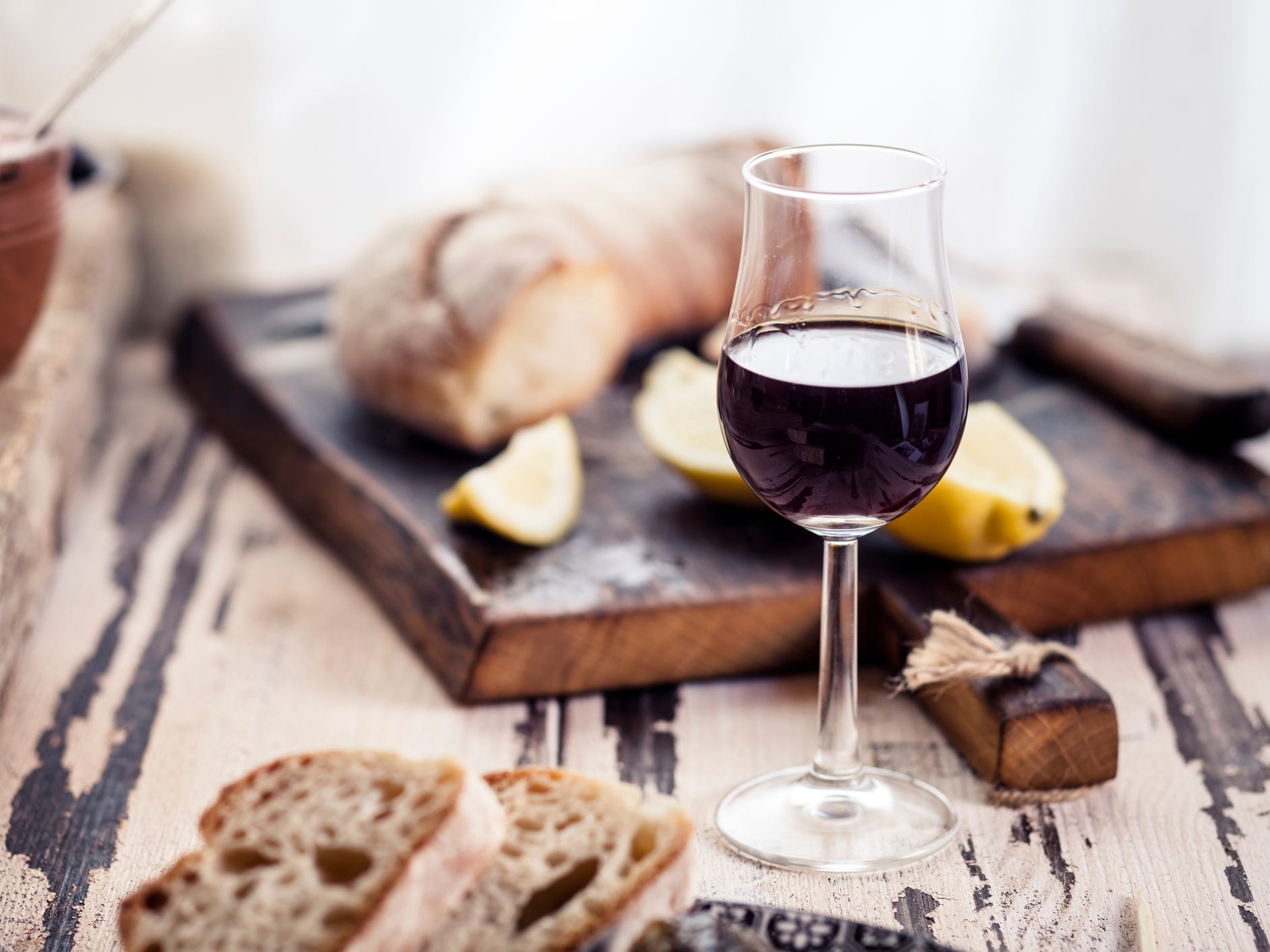
Westend61/Getty Images
Port
One of the most popular sweet wines on the market, Port takes its name from its country of origin, Portugal. It's a fortified wine, which means that it has a distilled spirit added to it, upping its alcohol content. Port comes in four different varieties: Ruby (a red Port), Tawny (a barrel-aged Port), White (a Port made with white grapes), and Rosé (a Port made the same way a typical rosé wine would be made). Bold cheeses, BBQ with a sweeter glaze, and, of course, desserts all pair beautifully with Port.
Sherry
Like Port, Sherry qualifies as a fortified wine. It comes from the Andalusia region of Spain, and while all Sherry undergoes some level of aging, darker versions (like Oloroso Sherry and Amontillado Sherry) spend more time in the barrel than lighter versions (like Fino Sherry). Sherry can be drier than other fortified wines, which gives it more food flexibility. It works just as well with an appetizer spread as it does with dessert.
Madeira
Madeira, a fortified wine from a Portuguese island off the coast of Africa, bears many similarities to Port and Sherry. It often features nutty flavors and a hint of caramel, along with fruit notes like orange and peach.
Moscato
A sweet Italian wine made from the Muscat Blanc grape, Moscato can be either still, sparkling, or semi-sparkling (with a lighter level of effervescence). The most popular Moscato, known as Moscato d'Asti, falls into the latter category. Moscato's pronounced but not-overwhelming sweetness lets it pair nicely with spicy dishes, savory cheeses, and fruit-based desserts.
Insider's takeaway
At the end of the day, a "good wine" is any wine that you enjoy. Spending serious bucks on high-end bottles isn't necessary for a great tasting experience, but a bit of know-how will help simplify your shopping and will increase your chances of ending up with a wine that's exactly what you want to drink.
